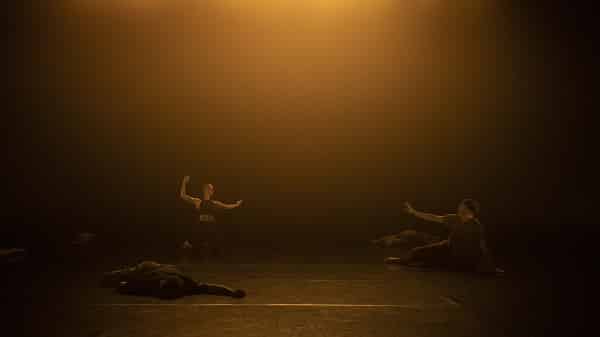Choreographer Raghav Handa’s latest production Cult of The Titans comes with a content warning.
The work contains images of the swastika. … Patrons (have) the opportunity to leave the theatre if they wish.
The piece is included in the show New Breed 2020, the Sydney Dance Company’s annual celebration of the best emerging Australian choreography. Handa is one of four choreographers featured in the company’s recent return to the stage after a year of cancelled shows.
Stemming from deep within the choreographer’s Hindu roots, the piece is intended to reclaim the religious symbol swastika, its image tarnished after it was stolen by Nazis.
Synonymous today with fascism, the swastika has for centuries stood for “well-being”, its literal meaning in the ancient Sanskrit language.
“People look at the swastika purely as a symbol of hatred,” Handa lamented to Indian Link. “Instead, we could actually start a conversation and ask how we can re-sanctify what was originally meant for peace, happiness and good fortune.”
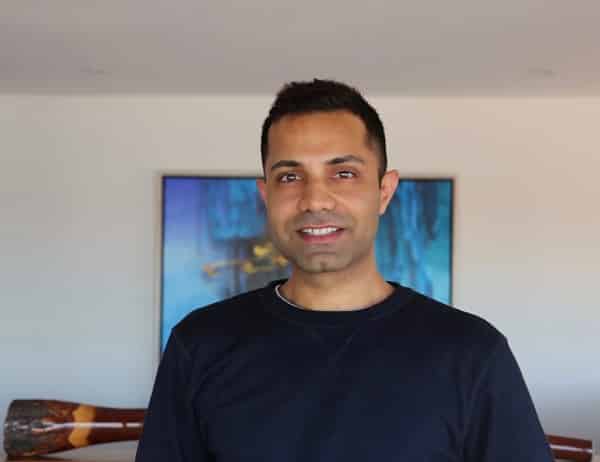
Hindu readers may have had this very conversation on more than one occasion with their mainstream friends, perhaps as recently as Diwali only days ago, when the swastika was to be found all over Indian homes, painted on doorsteps and included in floor decorations.
But Raghav welcomed that content warning given he did encounter some minor hiccups in the process.
“One of the performers felt really uncomfortable about rehearsing the piece and carrying on with the performance, which I really respect as everybody is going to have different reactions to this, so we had to have a change of cast at the last minute,” he revealed.
The intent of the piece is loud and clear from the very outset, with the image of the swastika appearing in the dark, somewhat menacing in its look and feel. Dancers attempt to stand in front of it and move in its imagery.
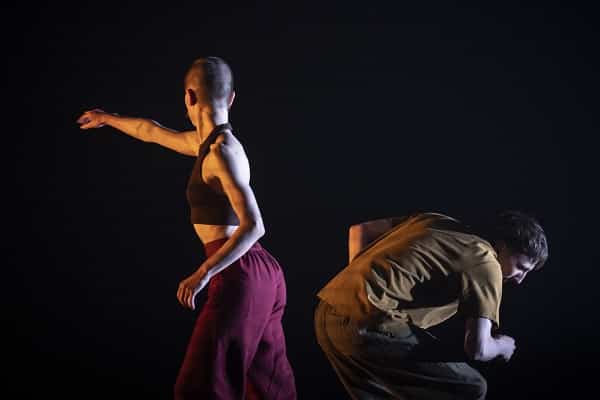
Soon, amidst more soothing music, a pair of characters representing the swastika’s Hindu origins are introduced, embodying, as Raghav notes, the “macrocosm” and the “microcosm”.
Their graceful synchronous movements, gentle facial expressions and comfortable multicoloured clothing exude a calming effect. They demonstrate the original unity and harmony that the swastika symbol represents in Hindu culture.
Contrastingly, lurking in the shadows, a group of antagonists stand dressed in dull monochromatic robes that can be interpreted as uniforms.
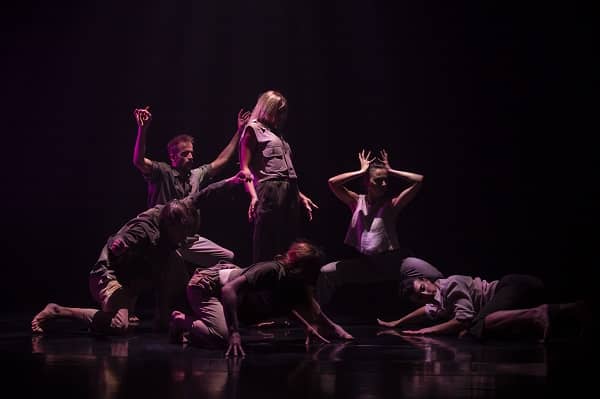
Suddenly and dramatically, one of them infiltrates the pair’s elegant duet by aggressively interrupting their flow. This interruption results in the radical separation of the two entities where one of them is hijacked by the fascist group and forced to dance in their circle.
After a period of visible conflict, the evil-doers’ dance comes to an end representing the fall of the Nazi regime; the two entities struggle to re-unite, portraying the swastika’s attempt at finding its roots in an atmosphere of stigma.
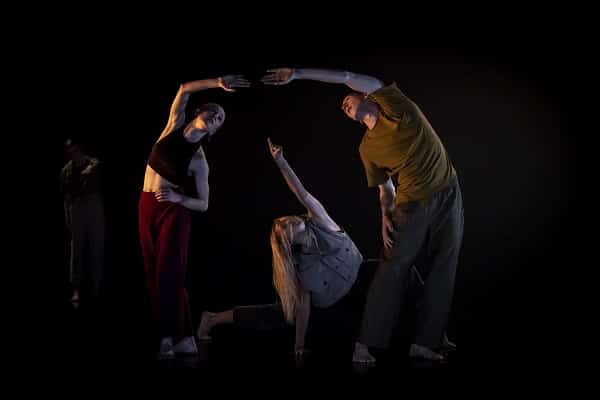
Handa said later he didn’t want to create just a piece of “sensationalised art” but intended it to be a valid conversation to be had because “it comes with an intention to unite rather than divide”.
He was glad to report that overall, the work garnered support.
“Leaders of the Jewish community attended the performance to lend their support to this conversation, and I think that was remarkable,” he stated.
The recital forced one to sit up and watch intently. The movements stunned with their stark militaristic choreography as well as subtle glimpses of Indian Kathak mudras, revealing Raghav’s characteristic choreography of a self-described “contemporary language”.
The music composed by James Brown with tabla and vocal stylings of Maharshi Raval and Raghav himself carried one seamlessly through the abstract storytelling.
In the end, the “seductive pull” of the swastika’s tragic mainstream representations stood suitably de-weaponised.
Translating the painful loss of the swastika’s original significance, many would leave the performance with a refreshed opinion, or at least allow it to chip away at the symbol’s prolonged and gross misappropriation.
The work will be performed at Sydney’s Carriageworks until 12 Dec.
READ ALSO: Paradigm shift – Raghav Handa’s latest production



